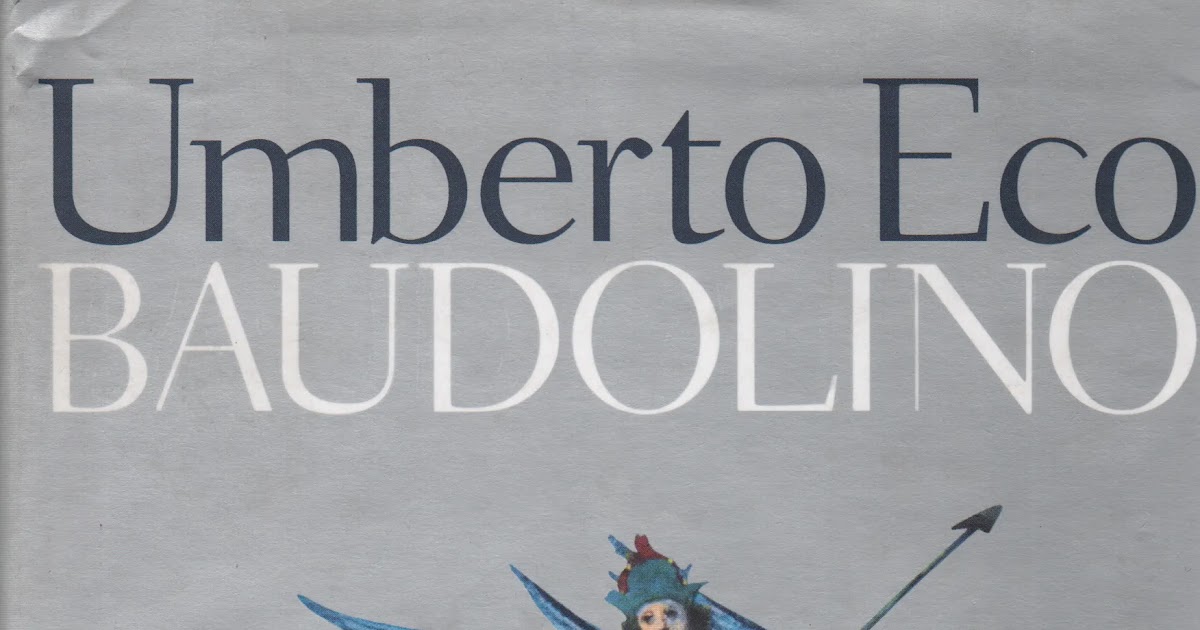
Original language: Italian
Original title: Baudolino
Translation: Helena Lozano Miralles
Year of publication: 2000
Valuation: Highly recommended
I must start by saying that I approached this work that I did not know simply because it was by Umberto Eco; for not knowing, I didn’t even know of its existence. However, I had previously read The name of the rose y Foucault’s pendulum and, to put it in an illustrative way, that had convinced me to read everything that Umberto Eco put on the back, even if it were 50 books.
Baudolino It does not reach the height of these two giants, but it would be an injustice to compare them; Any of the other two masterpieces mentioned above is enough for our favorite Italian semiotician to go down in history. But be careful, that doesn’t mean this isn’t a good book; As I say, it simply does not measure up to the previous ones mentioned.
In BaudolinoEco tells us the story of the character of the same name, a liar par excellence, but so, so much so, that sometimes he completely turns reality around and what he invents ends up becoming real.
Begin Baudolino telling his story and his intrepid adventures to the Byzantine Nicetas Choniates, whom he uses, as they themselves say, as parchment to tell his biography. This part comprises almost the entire title, except for the final chapters in which Baudolino, upon finishing telling his story, realizes the importance that certain decisive moments have had in his life, makes a resolution to amend, and, as he says the final chapter, Baudolino leaves.
Set at the beginning of the 13th century, Baudolino tells Nicetas (he tells us, readers) how he went from being the son of peasants to being adopted by Frederick I himself; He tries to give him the best possible education, so he sends him to Paris, where Baudolino is surrounded by a gang of wise men and scoundrels (priceless) who will accompany him for many years.
The affection that Baudolino feels for his adoptive father is great, and he always tries to do what is best for him and for the kingdom; It happens that sometimes, by disguising the truth a little, better results are achieved than leaving everything as it really is. Needless to say, neither Baudolino nor his cronies have a minimum of restraint and end up shaking the most solid and sacred foundations of Christianity with his lies. But yes, always with good ends, without a hint of irony; They do not seek the best for themselves, but for the emperor.
An important part of the novel is the search for Prester John by Baudolino and his friends, who, believing him king and priest, imagine him as the perfect support to keep Frederick I on the throne. It is the most adventurous part of the work, in which our friends go on a thousand adventures and come across all kinds of people and creatures.
And the general tone of the work? Well, Eco shows off his extensive – very extensive – knowledge on the subject to immerse us in a magical and absurd world of which we never know to what extent it is real, and to what extent it is the work of the fecund magic of the great liar.
It is clear that Eco enjoyed writing the book: he completely manages the world in which the novel takes place, both mixing invented characters and using historical figures for his protagonists. At the same time, he uses existing legends, as well as making his characters invent new legends that have crept into our world; They come across all kinds of semi-human mythological characters and also maintain all kinds of relationships with them…
Who won’t like it a 1st century Roman baptistery a novel in which poets become strategists of an army made up of sciapods, satyrs, blemias and panocios? In addition to other more peaceful creatures such as Hypatias, or more irrational, such as basilisks or chimeras. Nothing is missing, listen.
But as usually happens, this type of book with so many references is more enjoyable the more you know about the history of the time and it is possible to ignore the numerous inside jokes that Eco likes to lavish on. It has happened to me, Wikipedia me. It has helped a lot to “complete” the reading.
As a final note, and also referring to the latter, the translator reserves a few pages to explain to us some of the difficulties she had to face, and, believe me, it does not seem like an easy job. I get the feeling that Eco’s way of playing with language, mixing Piedmontese and different dialects, is not at all easy to translate into any language.
Summing up: As I said at the beginning, recommendable? A lot. On par with other works by Eco? No, but, as I said, it wouldn’t be fair to ask him to maintain that level.
Everything by Umberto Eco reviewed in the ULAD here.
Source: https://unlibroaldia.blogspot.com/2023/11/umberto-eco-baudolino.html


